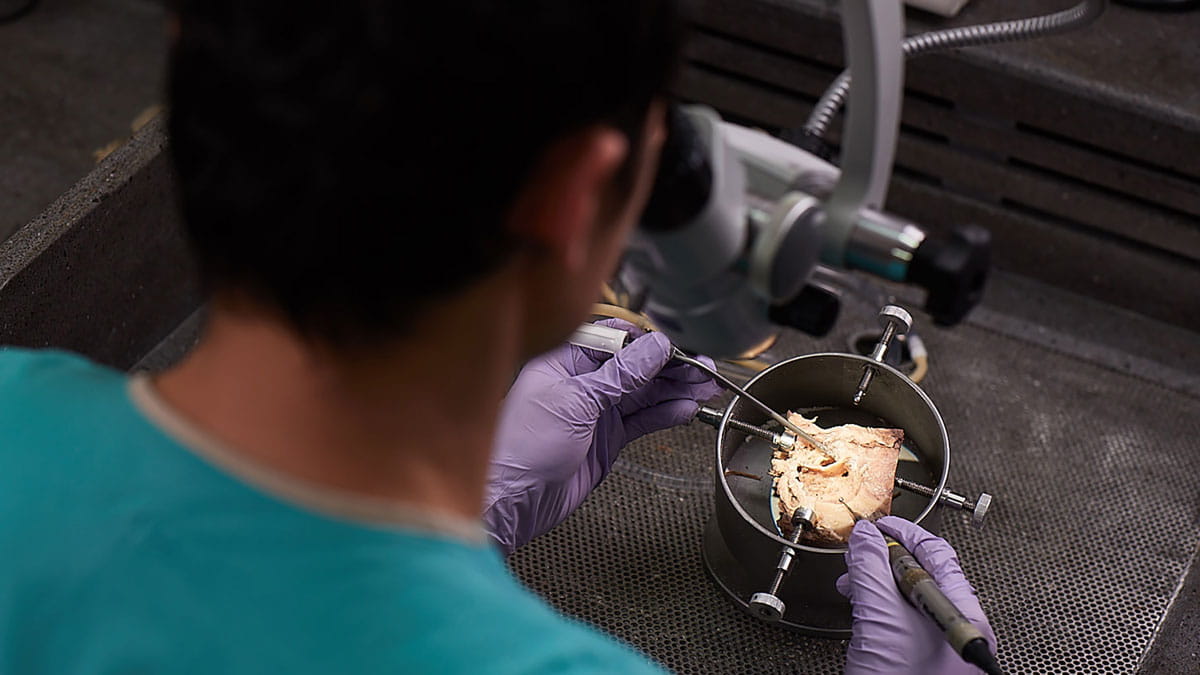Temporal bone lab renovations will further strengthen learners’ surgical skills
 When the Eye and Ear Institute at The Ohio State University Wexner Medical Center opened in 2009, its temporal bone laboratory quickly became an integral part of the learning experience for future surgeons, including otolaryngologists and ophthalmologists.
When the Eye and Ear Institute at The Ohio State University Wexner Medical Center opened in 2009, its temporal bone laboratory quickly became an integral part of the learning experience for future surgeons, including otolaryngologists and ophthalmologists.
Today — 15 years and countless surgical simulations later — this vital teaching and learning space is getting a makeover. Once renovations are complete in mid 2024, the new temporal bone lab will offer a more modern setting for learners to hone sophisticated surgical techniques.
Hands-on training in a risk-free environment
For residents learning to navigate the intricate anatomy of the head or skull base, repetitive dissection is key to navigating these complex areas and mastering various surgical techniques. To that end, the temporal bone lab allows physician learners to practice on fresh temporal bone specimens and full heads.
“Given the rapid technological advances since the lab opened, it was time to overhaul the space,” says neurotologist Oliver Adunka, MD, MBA, director of the Division of Otology, Neurotology and Cranial Base Surgery. “In our new lab, we’ll have 13 individual stations where residents can simulate procedures such as sinus surgery, skull-base surgery and oculoplastic surgery. For our otolaryngology residents, this will be where they start to become proficient in the various techniques used in middle ear and skull base surgery.”
Using technology to enhance teaching
Each of the new simulation stations will feature new instruments and updated equipment, including surgical microscopes, high-speed drills, a variety of surgical endoscopes, microdissection instruments, a suction-irrigation system with a downdraft system and temporal bone mounts.
Dr. Adunka says the biggest upgrade to the lab will be the installation of a state-of-the-art, high-definition digital video system, which will integrate cameras and monitors for flexible recording and observation. The system will allow for upward compatibility and future features, including online transmission of live surgery simulations to labs and lecture halls at other academic medical centers.
An investment in tomorrow’s top surgeons
The temporal bone lab renovations are being funded in a collaboration between the Department of Otolaryngology – Head and Neck Surgery and the Department of Ophthalmology and Visual Sciences. Both departments will also share a full-time employee who manages day-to-day lab operations.
“It’s so important for our learners to have access to high-quality training facilities like this,” Dr. Adunka says. “By honing their skills in a safe and supportive environment, they gain the confidence and expertise necessary to transition from the lab to the operating room.”
